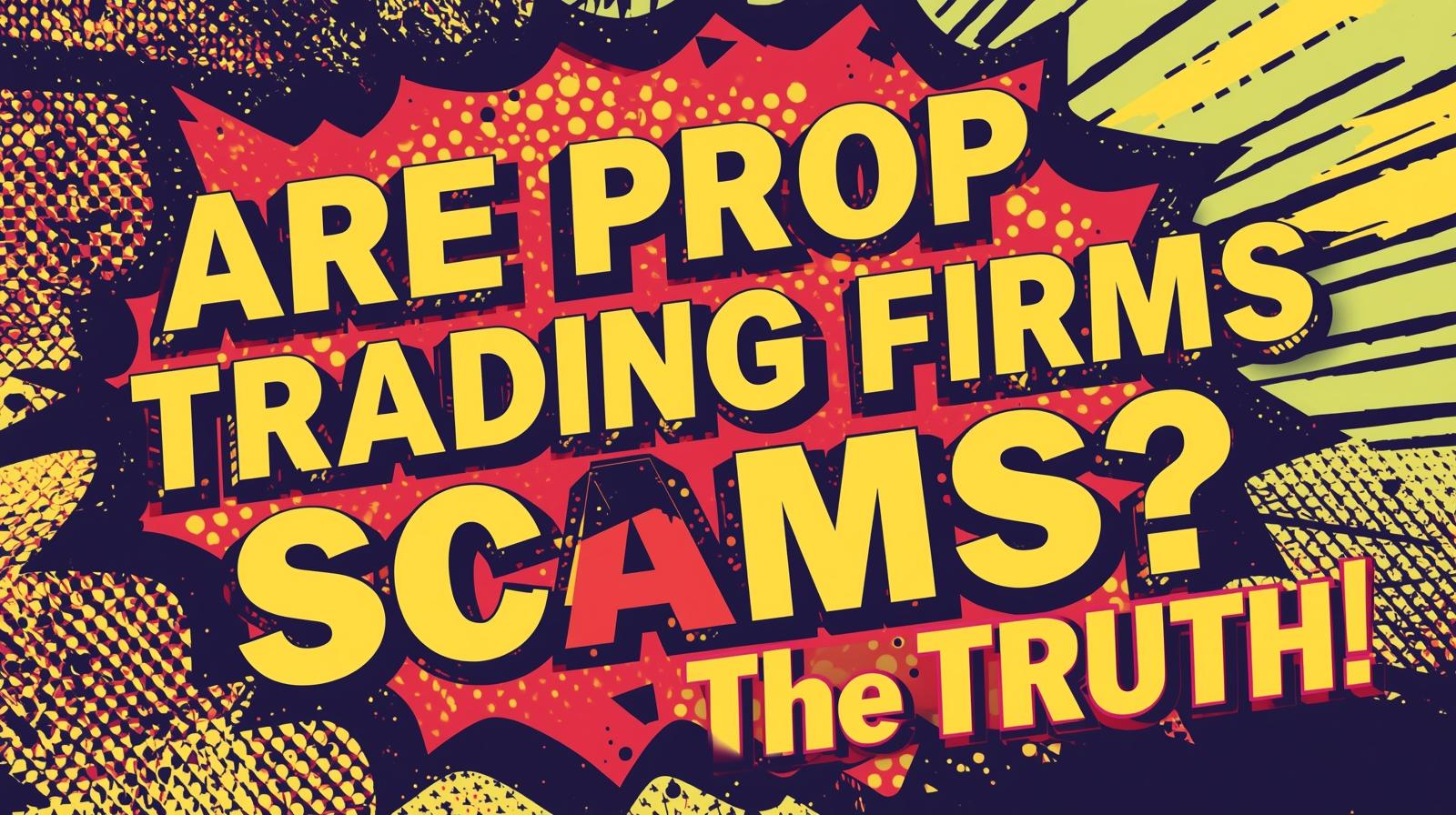
The world of proprietary trading has exploded in popularity over the past decade. With the promise of trading significant capital without risking your own money, prop firms have attracted thousands of aspiring traders. But alongside this growth has come skepticism and accusations that many prop trading firms are nothing more than elaborate scams designed to profit from evaluation fees rather than actual trading. So what’s the truth? Are prop trading firms legitimate business models or predatory schemes targeting hopeful traders?
Understanding Proprietary Trading: The Basics
Before we examine whether prop firms are scams, let’s clarify what proprietary trading actually is. Proprietary trading (or “prop trading”) refers to firms that use their own capital for trading activities rather than client funds. In modern prop firm models, traders are given access to the firm’s capital after demonstrating their trading abilities through evaluation phases.
The basic structure typically includes:
- An evaluation phase (often called a “challenge”) requiring an upfront fee
- Trading targets that must be met (profit targets with drawdown limits)
- A profit-split arrangement once funded (typically 70-90% to the trader)
- Ongoing performance requirements to maintain funding
The Legitimate Business Model: How Real Prop Firms Work
Legitimate prop trading firms operate on a straightforward business premise: identify skilled traders, provide them capital, and share in the profits they generate. It’s similar to how sports teams scout for athletic talent—finding individuals with exceptional skills and giving them the resources to perform at a higher level.
Revenue Streams of Legitimate Prop Firms
Reputable prop firms generate revenue through multiple channels:
- Trading profits: Their share of profitable trading (typically 10-30%)
- Evaluation fees: Charges for the initial challenge phases
- Volume rebates: Discounts from brokers based on trading volume
- Spread markups: Small markups on trading spreads
Are Prop Trading Firms Scams? The Truth
Are Prop Trading Firms Scams? The Truth
For established firms like FTMO, Topstep, or E8 Funding, the evaluation fees represent just one component of their business model, not the entire profit mechanism. Their long-term sustainability depends on having successful traders who consistently generate profits.
Red Flags: How to Identify Potentially Fraudulent Prop Firms
While many legitimate prop firms exist, the industry has attracted bad actors. Here are warning signs that a prop firm might be operating as a scam:
- Unrealistic profit targets (promising 50%+ monthly returns)
- No verifiable track record or company history
- Missing regulatory information or unclear corporate structure
- Overly complex or constantly changing rules
- No transparency about how trading is executed
- Little to no social proof or verified trader testimonials
- Pressure tactics to repeatedly purchase new challenges
The “Churn and Burn” Model
The most common scam approach is what I call the “churn and burn” model. These operations have no intention of ever funding traders long-term. Instead, they create nearly impossible evaluation criteria designed to ensure most traders fail. When traders inevitably breach some rule, their accounts are terminated and they must pay for new evaluations. This creates a perpetual revenue stream from evaluation fees with minimal payout obligations.
For example, I’ve seen firms that implement hidden rules like “no trading during high-impact news” but don’t clearly define what qualifies as “high-impact” until after a violation occurs. Others might suddenly change leverage restrictions or trading hours without proper notification.
What Makes Legitimate Prop Firms Different?
Transparency in Operations
Legitimate prop firms maintain transparent operations. They clearly outline:
- All trading rules and parameters
- How profits are calculated and distributed
- The exact metrics used to evaluate performance
- Their business structure and regulatory status
For instance, reputable firms like FTMO provide detailed statistics on pass rates and regularly showcase successful traders. They maintain consistent rules and provide thorough documentation of their trading parameters.
Reasonable Challenge Parameters
Legitimate firms set challenging but achievable targets. They’re looking for disciplined traders who can generate consistent returns, not impossible performance metrics. Typical legitimate parameters include:
- 8-12% profit targets over a 30-60 day period
- Maximum drawdown limits of 5-10%
- Reasonable minimum trading day requirements
Verifiable Payouts and Trader Success
The most telling sign of legitimacy is a history of verifiable payouts. Established firms proudly showcase their successful traders and payout records. They have active communities where funded traders discuss their experiences and confirm receiving payments.
The Economics: Why Some Traders Believe All Prop Firms Are Scams
A common criticism is that prop firms can’t possibly be profitable if they’re paying out 80-90% of trading profits. This skepticism stems from misunderstanding the complete business model.
The Math Behind Prop Firm Profitability
Let’s examine the economics with a simple example:
Imagine a firm charges $500 for evaluation phases and has 1,000 traders attempt the challenge each month. That’s $500,000 in monthly evaluation fees. If 5% of traders pass (a typical success rate), that’s 50 funded traders.
If each funded trader manages $100,000 capital and generates an average 5% monthly return ($5,000), that’s $250,000 in total trading profits. At an 80% profit split, the firm retains $50,000 from trading while paying out $200,000.
Combined with their $500,000 in evaluation fees, they’re generating $550,000 in revenue against $200,000 in payouts—a sustainable model even with generous profit splits.
Regulatory Considerations: The Gray Area
Prop trading exists in a regulatory gray area in many jurisdictions. Unlike hedge funds or asset managers who handle client funds, prop firms technically trade their own capital, which places them under different regulatory frameworks.
This regulatory ambiguity doesn’t automatically make prop firms scams, but it does mean traders should exercise additional due diligence before engaging with them.
Common Questions About Prop Trading Firms
What is the success rate for prop trading evaluations?
Across the industry, typical pass rates range from 4-8% for initial evaluations. This low pass rate doesn’t necessarily indicate a scam—trading profitably within strict parameters is genuinely difficult. However, if a firm has a pass rate below 1%, it may suggest deliberately impossible standards.
How to verify if a prop firm is legitimate?
Look for these verification points:
- Established company history (2+ years in operation)
- Transparent corporate structure and leadership team
- Consistent record of payouts with proof
- Active community of funded traders
- Clear, stable rules that don’t change arbitrarily
- Reasonable challenge parameters
Why do legitimate prop firms charge evaluation fees?
Evaluation fees serve multiple purposes:
- They filter for serious traders who are confident in their abilities
- They offset operational costs for managing thousands of evaluation accounts
- They provide a revenue buffer against the inevitable losing periods in trading
Without evaluation fees, firms would need to fund everyone who applied, which would be economically unsustainable.
Tips for Choosing a Reputable Prop Trading Firm
If you’re considering working with a prop firm, follow these guidelines:
- Research the firm’s history and leadership team
- Start with smaller account sizes to test the payout process
- Connect with current funded traders through social media or forums
- Verify the firm’s broker relationships and execution methods
- Check for consistent rule enforcement rather than arbitrary changes
- Look for educational resources and trader support
Conclusion: The Nuanced Truth About Prop Trading Firms
So, are prop trading firms scams? The answer is nuanced. The industry contains both legitimate businesses and predatory operations. Established firms with transparent operations, reasonable parameters, and verifiable payout histories represent legitimate opportunities for skilled traders. Meanwhile, newer entrants with unrealistic promises, hidden rules, and no proven track record often turn out to be fee-harvesting operations.
The prop trading model itself is economically viable when properly executed—combining evaluation fees, trading profits, and broker incentives. However, success rates remain low because profitable trading itself is difficult, regardless of the firm’s legitimacy.
For traders considering this path, thorough research and realistic expectations are essential. The opportunity to trade larger capital without personal risk is real, but it requires both finding a legitimate firm and possessing the trading skills to meet their requirements. The prop trading industry isn’t inherently fraudulent, but it does reward careful due diligence and skepticism toward promises that seem too good to be true.







